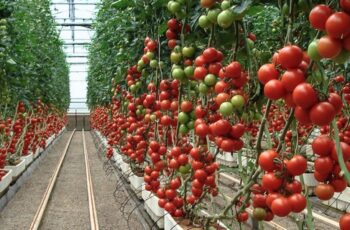Ad Blocker Detected
Our website is made possible by displaying online advertisements to our visitors. Please consider supporting us by disabling your ad blocker.
There is no doubt about it – when you make great compost, great things happen for your plants!
Compost is an amazing organic powerhouse of nutrients. Nutrients that help to keep the soil loose, workable, and most importantly, completely energized. We use it absolutely everywhere we can to enrich our soil and power our plants.
In our vegetable garden and flower beds, we add a few cups of a compost to every single planting hole. Not only does it help to build incredible soil strength and structure, but it also acts as the perfect slow-release fertilizer.
Compost gently releases a low dose of nutrients to a plant’s root system all season long. And as it does, it gives the perfect balance of nutrients for strong, steady growth, and higher productivity.
The Many Benefits Of Compost
In addition to using compost in the soil, we also use it on top of the soil surface around plants. Once a plant goes in the ground, we add a 2″ thick layer of mulch as a “mulching ring” around the base of every single plant.

The mulching ring first insulates the soil from temperature swings. And it also protects plants by suppressing weed growth, all while holding valuable moisture into the roots below.
But perhaps best of all, the compost ring also acts as a slow-release fertilizer. And every time we water or it rains, it leaches powerful nutrients to the roots below. Talk about a win-win for the plants!
The accolades go on and on for having compost at the ready. It is perfect as a powerful additive in homemade seed starting mixes and potting soil. It also is the sole ingredient for creating homemade compost tea. Which, by the way, just happens to be one of the most incredible all-natural fertilizers for vegetable plants, flowers, herbs, and more.
So now that you know just how great compost can be – let’s take a look at the 6 simple secrets to make your own incredible stash this year!
How To Make Great Compost For A Great Garden – The 6 Simple Secrets!
#1 – Build The Right Size Pile
One of the biggest mistakes a composter can make is to create a pile that is too small to work efficiently, or too big to manage.
If a pile is too small, the materials never “heat up” enough to decompose quickly. But if it gets too big, it can become difficult to turn and mix. And as you will see later in the article, turning and mixing can be a big part of creating a successful pile.
So what is the best size? For best results, a pile or compost bin between 3′ x 3′ x 3 high, to 5′ x 5′ x 3′ high works best. It allows for a pile big enough to have thermal heat, but not so big that it’s hard to turn. The 3′ x 3′ formula has worked really well for us in our home bins, allowing for plenty of heat, but easy for both of us to turn with ease.

There are some good options available for purchase, but you create a great-looking compost bin or bins right at home with ordinary lumber. We created our single and double bins above 2x construction lumber.
Not only have they lasted for years, they actually look quite attractive too. Best of all, they can be built in just a few hours!
#2 Get The Right Mix Of Materials Into Your Pile
To get the most from a compost pile, it takes a proper balance of Brown (Carbon) and Green (Nitrogen) materials. It can all sound intimidating, but it’s actually quite simple.
Brown materials consist of leaves, straws, wood shavings, dead grass, small twigs, etc. Greens on the other hand are materials like vegetable peels, coffee grounds, green grass, and plant clippings.
Greens can also be animal by-products such as chicken and rabbit manures. In fact, they are one “hot fuel” that gets a pile really cooking!

So what is the perfect ratio of browns to greens for a great compost pile? A good rule of thumb is for every 3 to 4 parts of brown material, add in 1 part green. For instance, if you add in 4 buckets of shredded leaves, then a bucket of vegetable peels or fresh green grass needs to go in at some point to balance it out.
And don’t fret about being exact or putting materials in at the same time. Add materials as you get them. Just try to stay as close to the ratios as you can over time to make the pile work at maximum efficiency.
#3) Chop The Ingredients!
You can go to the next page to read the rest of this article
VIVOSUN Outdoor Tumbling Composter Dual Rotating Batch Compost Bin, 43 Gallon Black Door
To order: https://amzn.to/3LmjQls

